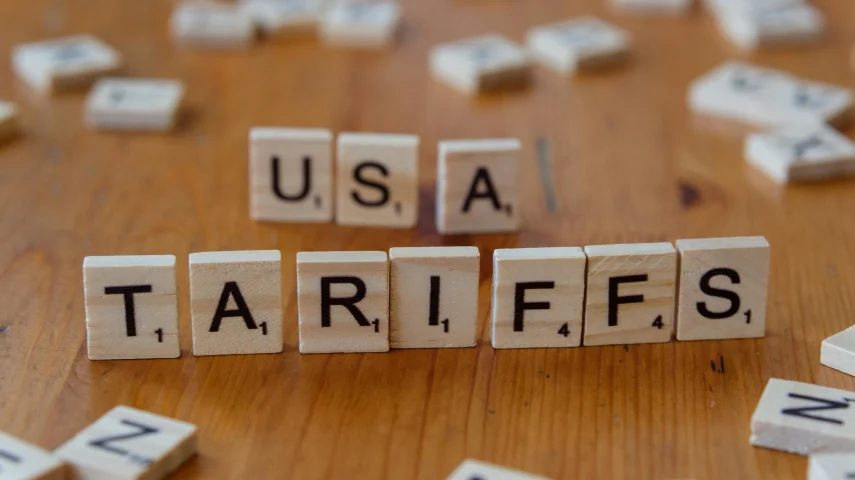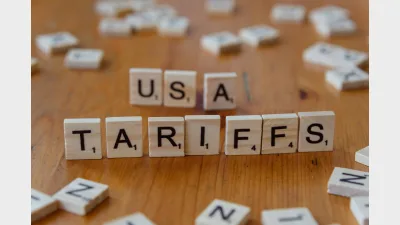Advantages of Trading AUD/USD amid Trump’s Trade War



The forex market is like a global mood ring. The forex market tends to react fast, and sometimes fiercely, to whatever’s going on in politics, the economy, or major global events. One of the most memorable shakeups in recent years? The U.S.–China trade war kicked off during Donald Trump’s presidency. Tariffs were flying, tweets were stirring up tension, and markets were constantly on edge.
In the middle of all that noise, one currency pair quietly started gaining serious attention from traders: AUD/USD, the Australian dollar versus the U.S. dollar. And that wasn’t just a coincidence. There were some strong reasons why this pair became such a prime target for short-term trades, longer-term plays, and everything in between.
Let’s break down what made AUD/USD so special during that turbulent time.
1. Australia’s Close Ties to China
Here’s the thing: Australia and China are closely tied, especially when it comes to trade. Australia sends a lot of goods to China, including iron ore, coal, wine, education services, tourism, and more. So when China’s economy slows down, Australia feels it too.
During the trade war, U.S. tariffs and rising tensions put pressure on China’s economy, which in turn hurt Australian exports. Since the Aussie dollar often moves in line with China’s economic health, every major trade war headline could trigger a noticeable reaction in AUD.
For traders, that made AUD/USD easier to anticipate—bad news usually meant a weaker Aussie, while signs of progress gave it a boost:
- Bad trade war news → AUD weakens
- Hints of peace talks or deals → AUD strengthens
If you were trading the news, this pair gave you clean, quick opportunities.
2. The U.S. Dollar: The Ultimate Safe Haven
When global uncertainty ramps up, people tend to run to the U.S. dollar. It’s like the financial world’s security blanket.
So, every time things escalated in the trade war, new tariffs, angry tweets, canceled negotiations, traders would flee riskier currencies (like AUD) and pile into the USD. The result? AUD/USD would drop, often fast.
This pattern gave traders a reliable playbook: fear equals a falling AUD/USD, if you want to explore how traders capitalize on these moves, Forex Trading on AUD/USD is a great place to start.
3. Volatility (In a Good Way)
For traders, volatility = opportunity — as long as you know how to manage risk.
Normally, AUD/USD is relatively calm. But during the trade war? It was full of big moves, sharp reversals, and strong trends. On some days, it would swing over 100–150 pips, giving intraday traders plenty to work with.
Surprise headlines, tweet storms, and central bank reactions made it an active, exciting pair to trade — not boring, but not chaotic either.
4. A Currency That Mirrors Global Sentiment
The Aussie dollar is often called a “risk currency.” Basically, when the global economy looks good, AUD tends to rise. When fear takes over, AUD drops.
During the trade war, this was even more obvious:
- Stocks down? AUD down.
- Copper and iron ore prices falling? AUD down.
- Positive trade vibes? AUD pops back up.
By tracking commodities, equities, or Chinese economic indicators, traders often anticipated AUD/USD moves. It made this pair a favorite for traders who connected the dots across markets.
5. Central Bank Moves Added Extra Fuel
The Federal Reserve and Australia’s central bank (RBA) were both adjusting interest rates during this time. In 2019, the Fed went from raising rates to cutting them. The RBA also lowered rates due to weaker global growth.
These shifts changed the interest rate differential between the two currencies — which can significantly influence currency values in the forex market.
Here’s what traders watched for:
- If the RBA was more dovish (rate cuts), AUD/USD usually dropped.
- If the Fed cut rates unexpectedly, USD would weaken — and AUD/USD would climb.
So, you didn’t just need to follow politics — central bank policy became part of the puzzle.
6. Clean Charts, Clear Setups
Technically speaking, AUD/USD is highly favorable for technical traders.
During the trade war, price often respected key levels — support, resistance, trendlines, and major moving averages. Patterns like pin bars, engulfing candles, and breakouts were common and reliable.
And unlike some exotic pairs, AUD/USD rarely had massive gaps or wild spikes. That made it easier to set stop-loss and take-profit levels with confidence, a big plus in volatile times.
7. Lower Costs and Easy Access
Trading AUD/USD is cost-effective and accessible. Since it’s one of the major pairs:
- Spreads are tight — great for scalpers
- Liquidity is high — orders get filled fast, even during news events
- All brokers offer it — you don’t need to hunt for special access
In short, AUD/USD offers traders a liquid, responsive pair, minus the high fees or unpredictable slippage seen in exotic currencies.
8. You Could Predict the Headlines (Sort Of)
One quirky thing about Trump’s trade war? The drama was weirdly predictable. You knew when trade talks were scheduled. You expected tweets after the G20 meetings. And markets responded in pretty consistent ways.
That gave traders a chance to plan ahead or trade around specific events. Some even used “fade the tweet” strategies — jumping in after an overreaction and profiting from the correction.
In short, it was a volatile but semi-structured environment, the kind of backdrop savvy traders thrive in.
Final Thoughts: AUD/USD Was a Trader’s Playground
During the Trump trade war, AUD/USD wasn’t just another currency pair. It became a reflection of global sentiment, a way to play the economic chess match between China and the U.S., and a technically rich, cost-effective pair to trade.
If you understood the bigger picture, trade relations, commodities, risk appetite, and interest rates, this pair gave you real opportunities.
Of course, volatility can cut both ways. If you didn’t manage your risk, things could turn ugly fast. But for disciplined traders with a solid plan, AUD/USD was one of the most actively traded and opportunity-rich pairs during one of the most politically charged trading periods in recent memory.
Recommended for you
Cryptocurrency liquidity has become a cornerstone of sophisticated wealth management strategies, with real-time settleme...
Recent turbulence in global equity markets should serve as a sharp reminder for investors that volatility doesn’t send a calendar invite.
In a world where influence transcends borders, Bancara offers access, authority, and lifestyle integration for a new generation of global investors.
Starting out as a sole trader typically invites a heady mix of freedom and fear. You’ve chosen to back yourself, build u...











